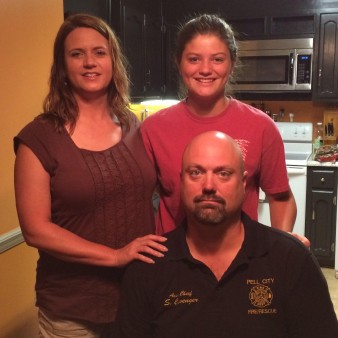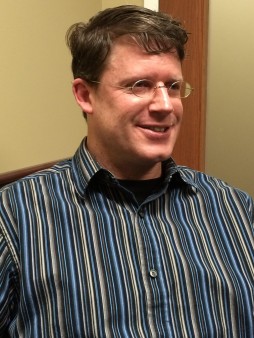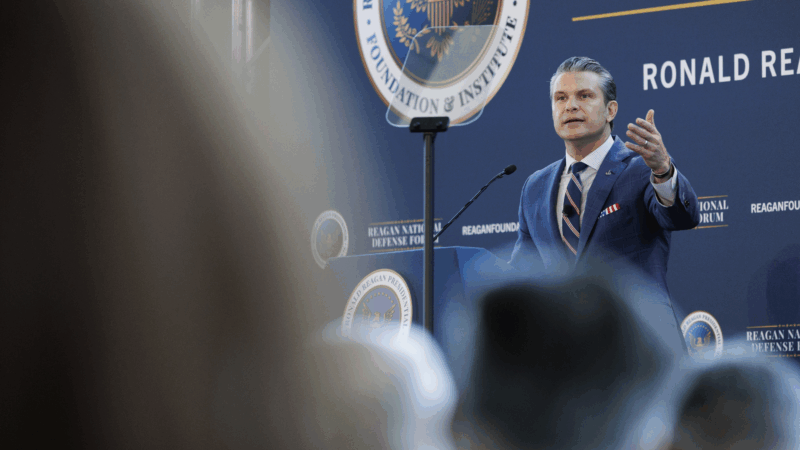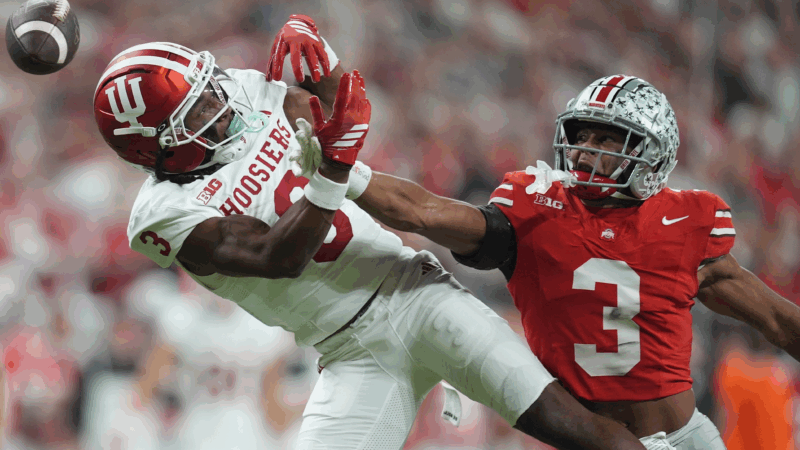New Technology Aims To Measure Concussion Risk In Athletes
Concussions can occur from head injuries while playing any sport where a player receives a blow to the head. And for years, hearing the crack of two helmets colliding or seeing a player crash to the ground headfirst, was the only way to determine if a player might have suffered a concussion. But that’s changing. In the second installment in our series on sports concussions, Les Lovoy reports on a Birmingham company that’s on the forefront of creating sensor technology that allows coaches and physicians to measure the impact to the head — in real time.
Shauna Clevenger (right), was taking batting practice before a softball game and got hit in the head, from a wlld pitch. Her parents, Shannon and Shaun Clevenger took her to a doctor the next morning, who confirmed she had received a concussion.
On a hot summer Saturday afternoon, Shauna Clevenger steps up two the batters box. Her softball team, the “Cobras” is playing in a tournament, outside of Cullman. Shauna’s a, soft-spoken incoming high school freshman, and today she has her long brown hair in pigtails.
A few weeks back, Shauna was taking batting practice before a game. Her coach threw through a wild pitch.
She points to her temple. Shauna, wasn’t wearing a helmet. After the game, she told her mother what happened. For a short time, she felt like she couldn’t speak, and had a headache. Her parents were concerned. Shannon Clevenger is Shauna’s mom.
“And, that night, she came in and had gotten a shower and came in and said when she looked at her phone, it made her head hurt worse,” she said. “So, at the point, we were concerned she possibly had a concussion.”
Her parents took her to a doctor the next morning, who confirmed she had a concussion. Robert Canatu, professor of neurology at Boston University, says they did the right thing. He says getting a concussion, especially while playing football, is similar to a bowl of Jell-O being shaken hard.
“The skull is taking the hit and then the head is being moved and he contents of the head are being very violently shaken. And, they’re being rotated, as well, Canatu explained. “And, those are the factors that stretch the brain tissue, tear brain tissue, windup causing concussions and sometimes worse, such as bleeds within the brain.”
Diagnosing them quickly is key. A number of companies are creating products to help coaches and doctors see if a player possibly has a concussion. These range from special helmets to mouthpieces and caps to headbands. In Alabama, a Birmingham-based company named Archetype recently developed the Player MD system. Jason Cooner is Archetype’s CEO.
“Player MD is basically a sensor-based application,” he said. “We put sensors on skull caps or headbands, monitor impacts on athletes as they’re playing sport and basically what it does is it quantifies the impact into an overall risk assessment.”
Jason Cooner is the CEO of Archetype, a Birmingham-based company, which has created a sensor-based system which measures blows to the heads of athletes.
With data from Player MD’s sensors, Cooner and his team compare a player’s hits to their database of about 2 million impacts. I wanted to see how this technology works first-hand. So, I’m putting on a helmet that a division one football team would wear out on the field. OK Jason, give me a pop.
He shows me a graph that’s appeared on his computer screen.
“If you notice, you have had a very big whack there and have a 25 percent chance of potential concussion in the hospital,” Cooner said. “Now when they get over 10 percent, I say that’s when you need to keep an eye on the kid.”
Dr. Jeffrey Dugas is a surgeon in Birmingham who specializes in sports medicine at Andrews Sport Medicine Orthopedic Center. He’s also team physician for several area high school football teams. Dr Dugas says technology like Archetype’s Player Md can’t diagnose concussions. That’s a call for physicians to make. What it can do is give the medical staff a heads up.
“So, if we know that a kid hits a red line, so to speak, or a threshold at which we’re concerned about a head injury, that doesn’t mean they have a concussion,” Dugas noted. “It doesn’t mean they have a traumatic brain injury. It just means we need to be more aware of it, as the medical professionals, that are on the sidelines, looking at these kids. It raises a red flag with us, and we say we need to make sure that one is ok.”
But coaching staffs are slow to embrace the new technology. One reason is cost. At $150 per, some high schools may find the cost prohibitive. And, there’s the perception among players that someone is “less tough” if they agree to wear something that measure hits. Shaun Clevenger was shaken by his daughter Shauna’s brush with a concussion. He says it’s worth the cost, finically and beyond, to protect young athletes’ heads.
“Anything they can do to help research, I think they should go ahead and participate, especially something we’re so gray in,” Clevenger said.
The “grey” Clevenger is referring to, are the “unknowns” when it comes to diagnosing a concussion. It might take a major shift in culture and attitudes of players and coaches for this technology to become mandatory or standard. For now, some prominent Alabama college football programs are leading the charge. Auburn University uses Player MD during practice and will start equipping players with the sensors during games in the upcoming season. For WBHM, I’m Les Lovoy.
Light from satellites will ruin majority of some space telescope images, study says
Astronomers have long been concerned about reflections from satellites showing up in images taken by telescopes and other scientific instruments.
Defense Department is reviewing boat strike video for possible release, Hegseth says
In a speech on Saturday, Defense Secretary Pete Hegseth defended the strikes, saying: "President Trump can and will take decisive military action as he sees fit to defend our nation's interests."
Bama, Miami in, Notre Dame out and Indiana No. 1 in College Football Playoff rankings
Nobody paying attention for the past 24 months would be surprised to see Indiana – yes, Indiana – leading the way into this year's College Football Playoff.
McLaren’s Lando Norris wins first F1 title at season-ending Abu Dhabi Grand Prix
Red Bull driver and defending champion Max Verstappen won the race with Norris placing third, which allowed Norris to finish two points ahead of Verstappen in the season-long standings.
A ban on feeding pigeons ruffles lots of feathers in Mumbai
The pigeon population has exploded — a result of people feeding the birds. For some it's a holy duty and a way to connect to nature. Critics point to health risks tied to exposure to pigeon droppings.
UN humanitarian chief: world needs to ‘wake up’ and help stop violence in Sudan
The UN's top humanitarian and emergency relief official has told NPR that the lack of attention from world leaders to the war in Sudan is the "billion dollar question".









